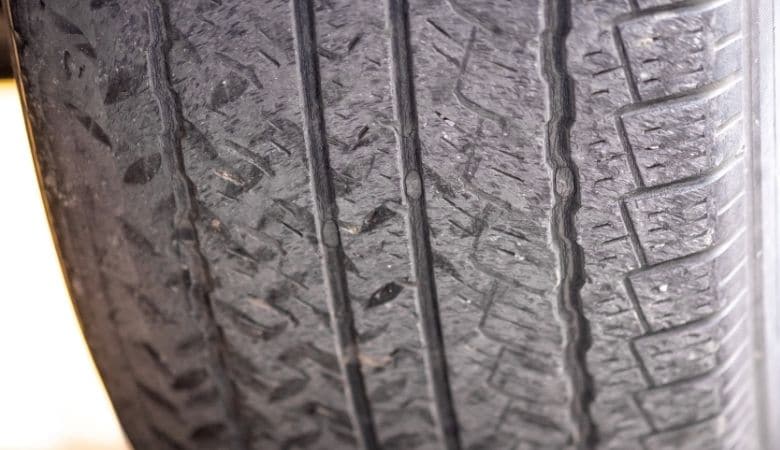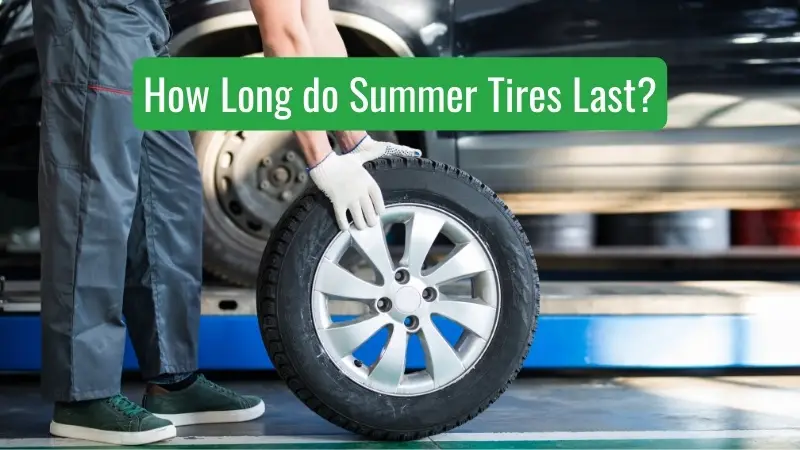When it comes to driving in warmer months, having the right set of summer tires on your vehicle is crucial for optimal performance, safety, and comfort.
But, how long do these tires typically last, and how can you determine if it’s time for a replacement?
In this article, we’ll explore these questions and provide valuable insights on maintaining your summer tires’ longevity.
Summer tires are designed specifically to provide better grip, handling, and fuel efficiency in warmer temperatures. However, various factors can influence their lifespan, such as driving habits, road conditions, and tire maintenance.
Keeping an eye on tire wear indicators and knowing the signs of a worn-out tire can help ensure a safe and comfortable driving experience throughout the sunny season.
Let’s dive into the world of summer tires and learn how to make the most out of them while ensuring a timely replacement when necessary.
Stay tuned for essential tips and information that will keep you well-informed on this crucial vehicle component.
Understanding Summer Tires
Summer tires, also known as performance tires, are designed primarily for high performance on dry and wet roads during the warmer months.
Key Features
Summer tires are characterized by their unique features that set them apart from other tire types, such as all-season or winter tires. Some key features of summer tires include:
- Soft rubber compounds for increased grip and precise handling
- Wide and shallow tread grooves to optimize water evacuation on wet roads
- Large contact patch for improved braking and stability
These features help your vehicle maintain control and navigate safely in warm, dry, or wet conditions that summer months bring.
Optimal Conditions
Summer tires perform best in temperatures above 7°C (44.6°F), as they are designed to maintain grip and control when the road surface is warm. Ask yourself, has your area experienced a significant increase in temperature lately? If so, you may be wondering if your summer tires are up for the task.
In ideal conditions, summer tires typically have a lifespan of anywhere between 20,000 to 50,000 kilometres (12,427 to 31,068 miles), depending on factors such as driving habits, proper maintenance, and tire quality. Checking for wear on a regular basis is essential to ensure your safety and extend the life of your tires.
Average Lifespan of Summer Tires
As a car owner, it’s important to know how long your summer tires can last to ensure optimal performance and safety. The lifespan of summer tires depends on a variety of factors, such as driving habits, tire maintenance, and road conditions.
Factors Impacting Lifespan
There are several factors that can impact the lifespan of your summer tires:
- Proper maintenance – Regularly check your tire pressure and alignment to avoid uneven wear.
- Driving habits – Aggressive driving, frequent hard braking, and high-speed cornering can shorten the life of your tires.
- Road conditions – Rough roads, potholes, and sharp objects can damage your tires, requiring premature replacement.
Mileage Estimates For Summer Tires
While there is no definitive number for how many miles summer tires can last, estimates generally range between 20,000 and 50,000 miles. However, it is essential to follow your tire manufacturer’s recommendations and regularly inspect your tires for signs of wear.
Do Summer Tires Wear Faster Than Other Tires?
Summer tires, also known as performance tires, are designed with a specific focus on providing excellent traction on dry and wet roads.
Compared to all-season or winter tires, they may wear faster due to their softer rubber compound. The increased grip offered by summer tires can be beneficial for your driving experience, but it comes at a cost of faster wear rate in some cases.
Are your summer tires nearing their end? Remember that the age of your tires can impact their performance as well.
Tires typically should be replaced every six to ten years, regardless of mileage. Always consult your tire manufacturer’s recommendations and perform regular inspections to ensure optimal performance.
Signs It’s Time to Replace Your Tires

How do you know when to replace your summer tires? Here are some key signs to look for.
Tread Wear Indicators
Have you ever wondered how to tell if your tire’s tread is wearing down? Tread wear indicators are an excellent tool for this. These are raised sections positioned within the grooves of your tire. When the tire tread wears down to the level of these indicators, it’s time to replace your tires.
Another option for measuring tread depth is the penny test. Insert a penny into the tread with Lincoln’s head facing down. If you can see the top of his head, your tread depth is too low, and it’s time for new tires.
Tire Age
Did you know that tires have a shelf life, regardless of their tread depth? Even if your tires haven’t seen much use, they can still degrade over time. The general rule of thumb is to replace tires every six years, regardless of tread wear.
Why is tire age important? As they age, tires can develop cracks and lose elasticity, potentially leading to tire failure. You’ll usually find a tire’s age by checking its sidewall for the DOT code, which indicates the week and year of manufacture.
Physical Damage
Are there any visible signs of damage on your tires? Keep an eye out for cuts, punctures, or sidewall bulges. Such damage can compromise your tire’s structural integrity and might even lead to a dangerous blowout.
What should you do if you see any of these signs? Don’t ignore them! Consult a professional to assess the extent of the damage and whether you need to replace the affected tire or all four tires. Remember, your safety is the top priority.
Tips for Maximizing Tire Life
Getting the most out of your summer tires depends on proper care and mindful driving. In this section, we’ll provide you with essential tips to extend the life of your tires.
Proper Maintenance
Keeping your tires in great shape starts with regular maintenance. Here are some key steps you should take:
- Check tire pressure: Maintaining the correct tire pressure is crucial for both safety and longevity. Underinflated or overinflated tires can wear out faster and even cause accidents. Bridgestone recommends checking your tire pressure at least once a month to ensure they’re at the optimal level.
- Rotate your tires: Regular tire rotation helps promote even wear, which extends their lifespan. Typically, tires should be rotated every 5,000 to 7,500 miles. Refer to your vehicle owner’s manual for the recommended rotation schedule.
- Balance and align: Balanced and properly aligned tires help prevent uneven wear and can boost fuel efficiency. Get your tires balanced and wheels aligned according to your vehicle manufacturer’s recommendations.
- Inspect for damage: Examine your tires periodically for signs of damage, such as cuts, punctures, or cracks. Early detection of issues can help you address them before they become more serious problems.
Safe Driving Habits
How you drive can also impact your tires’ longevity. Follow these guidelines for preserving your tires:
- Avoid sudden stops and sharp turns: Hard braking and sharp corners can cause excessive wear on your tires. Try to slow down gradually and take turns gently whenever possible.
- Drive at appropriate speeds: Excessive speeds can generate additional heat and stress on your tires, accelerating wear. Stick to the speed limits and adjust your speed according to road conditions.
- Steer clear of obstacles: Potholes, debris, and other hazards can damage your tires and even cause blowouts. Whenever it’s safe to do so, try to avoid obstacles on the roadway.
- Lighten your load: Carrying excess weight in your vehicle can put additional strain on your tires, leading to premature wear. Remove unnecessary items from your car to reduce the load.
Remember, proper tire maintenance and safe driving habits can significantly extend the life of your summer tires. With these tips in mind, you’ll be well-equipped to keep your tires in prime condition.
Conclusion
As you’ve learned throughout this article, the lifespan of summer tires depends on various factors, such as driving habits, road conditions, and tire maintenance. So, how can you determine if it’s time to replace your summer tires?
First, assess your tires’ tread depth using the penny test. Consistently measure the tread depth to ensure it remains above the minimum safety standard of 2/32 inches or 1.6 millimeters.
Next, inspect for any signs of damage like cracks, bulges, or punctures that may compromise your tires’ structural integrity. If you spot any concerning issues, it’s wise to consult a tire professional before deciding if it’s time for a replacement.
Lastly, always keep in mind that not all summer tires are created equal. Some may last longer than others based on their compound, design, and construction. Remember to rotate them regularly and maintain the recommended air pressure to maximize their lifespan.
By staying vigilant and conducting routine checks, you can ensure your summer tires remain safe and effective on the road.
Happy driving!
Hi, my name is Niklas, the head content creator & CEO of Whirling Wheelz. I am very interested in vehicles of all kinds, mainly cars. I have a car mechanics degree from high school and a big hobby of mine is to follow the WRC (World Rally Championship) both online and through travel.


